
by Pam Ranheim | Dec 16, 2021 | pet care, pet health, pet lovers, pets, Plymouth MA
The holidays are here, which means lots of decorative additions to your pet’s home! We sometimes forget to “pet-proof” our fabulous decking, so we came up with some holiday pet safety tips to be aware of. Let’s enjoy the holidays and prevent unnecessary emergencies during this magical season.
Pet-safe Holiday décor
With so many items to put out and nooks and crannies to decorate, we forget to press PAUSE and think about how our pets will react to these decorations. Remember these four essential rules when turning your home into a safe winter wonderland for the holidays.
- Keep the electric cords out of reach or hidden. Even if your pet leaves the year-round cords in your home alone, they may not do the same for new and exciting ones with sparkling lights. Remember that anytime we make changes in THEIR home, they will be curious. Remember not to underestimate what they may do when new cords appear in their space.
- Be aware of the seasonal plants you purchase. While they are beautiful, many of these festive flowers are highly poisonous to our pets if ingested. A few of the most popular ones to be aware of are Holly, Mistletoe, and Poinsettias. Before bringing a seasonal plant into your home, check the full list of plants toxic to pets. (Need more information on toxic plants? Read our blog from July, 2020!)
- Keep tinsel and ribbon out of reach. The sparkle of the tinsel, the flow of a ribbon, is too much for a kitty to stand! For tinsel, the biggest concern is ingesting it, which can cause severe blockage and intestinal issues. While playing with ribbons is an enjoyable pastime, our pets can become tangled up quickly. If wrapped around their neck or paws, it can send them into a panic and escalate the situation. In addition, many ribbons have wiring in them, which can poke an eye or even be chewed off and ingested. Keep a watchful eye out for any tinsel and ribbon playing this holiday.
- Keep an eye on festive flames. Whether you are lighting up some candles for fun, warmth, or practicing an important tradition, always keep these flames out of reach of pets. They can become too mesmerized by the glow or accidentally bump the furniture with a burning candle. Never keep your pet in a closed room with any flame.

The Christmas Tree
Whether you have a real tree or a fake tree, knowing the potential dangers and trouble your pets can find is important. Here are a few things to keep in mind when it comes to Christmas Trees in your home and the safety of your pets.
- Chewing on branches. Ingestion of pine needles or plastic needles can cause major blockages in your pets’ intestines and other health complications. Be sure to discourage biting or chewing the tree. If the behavior continues, consider moving or guarding the tree away from them. You can also try spraying some Bitter Yuck (safe for dogs and cats) to deter them.
- Tree Water. The water in a tree stand can contain dangerous chemicals. Avoid letting your pets sneak a sip from the tree base to keep them safe. Use a tree skirt to cover the opening of the tree base to keep your pet from being able to drink from it.
- Most decorative tree hangings are pretty fragile and can easily shatter to pieces. Cats might want to bat at all the shiny objects, becoming a safety hazard. Try attaching small zip ties to ensure the ornaments are not removable off the tree.
- Tree Lights. Sparkling lights draped on the edge of a tree can lead to your pets pawing or getting tangled in the cords. Rather than draping them around the outer edge of your tree, try placing them closer to the trunk of the tree. The illumination will still be there while making them far less tempting to our fur babies.
Yuletide Yummies
As tempting as it may be to give our furry friends table scraps, it’s best to avoid this kind gesture for the sake of their health. Not only are many of our dishes toxic to pets, but they also have a sensitive digestive system. Like people, an upset stomach for our pets causes discomfort, and no one wants an upset tummy on a special day like Christmas. If you’re looking to make their holiday meal special, add a dollop of pumpkin puree or some chicken broth. Foods to always keep out of reach of pets include: Chocolate and other holiday candies, raw egg (particularly in dough), grapes and raisins, fruits and veggies containing pits such as olives and cherries, and onions.
Don’t forget to keep an eye on the trash can!
Be Prepared for Emergencies
Now that you’ve safely decorated for the holidays, you can think of your emergency plan. Knowing what to do in an emergency is critical in making sure the situation does not escalate. Make sure you and everyone in your household understand the steps to take if an emergency arises. Be sure to always have important phone numbers in your contacts and placed in a visible location, like your fridge. Regular vet, emergency vet and Poison Control are a few numbers to have on hand. Keep your pet’s medical records in a convenient location as well—the more information you can provide during an emergency, the better. Lastly, remember to have a plan. Know the places you could call for help and the quickest route to get there.
It’s the most wonderful time of the year! Help keep your pets safe this holiday season by keeping an eye out for potential dangers in your home and following these safety tips. Ensure that your pets are taken care of with Just Around the Corner. We offer pet care of all kinds, including daily Dog Walking, Dog Hiking, and Pet Sitting in Plymouth, MA. To learn more about how Just Around the Corner can help, check out our Services Page. You can also Contact Us for more information. Be sure to Like us on Facebook and Follow us on Instagram! Wishing you and your pets a happy and healthy holiday season!
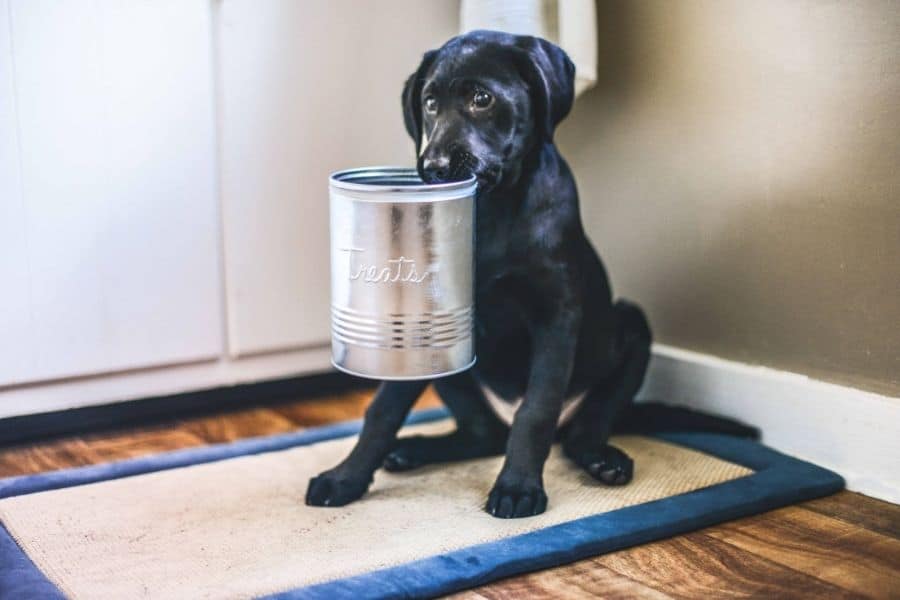
by Pam Ranheim | Oct 15, 2021 | dogs, pet care, pet health, pets, Plymouth MA
Do you know about Xylitol? Most people have no idea about Xylitol and its effects on dogs. This hidden threat is a poison to our dogs. It is responsible for poisoning dogs every year and is even known to cause death. It’s a popular substance in our everyday products and foods and is most likely in your home right now. Even though humans can consume it without risk, Xylitol is a potential killer to dogs. In this blog, we hope to teach you about Xylitol and help prevent unnecessary trips to the vet this year!
What is Xylitol?
Xylitol is a sugar alcohol that is naturally produced in many fruits, vegetables, and plants. It is a sweet substance that is also known as “birch sugar.” Although it’s a healthier alternative for sugar in our human diets, dogs cannot digest Xylitol, which could be very harmful to them. Xylitol has become a popular sugar substitute in our diets, so we need to be extra careful about what we give our dogs.
How Does Xylitol Affect Dogs?
Xylitol activates insulin production in dogs which can decrease your dog’s blood sugar levels. The effects of Xylitol can happen quickly if it is ingested. Since this substance affects blood sugar levels, your dog can feel the impact of this quickly and experience loss of coordination and loss in muscle strength. Depending on the amount of the substance consumed, your dog may experience anything from being lethargic and weak or seizures and death from liver failure if a large amount is consumed. Varying amounts can be lethal to your dog, so you must not feed any products containing Xylitol to your dogs.
What Products are Made with Xylitol?
Xylitol is in more products than you think. It is commonly known in sugar-free gum, but it is also found in so many sugar-free and no sugar added products. This substance can be found in: sugar-free baking products, ice creams, yogurts, some peanut butter, and condiments and sauces are even made with it too. Human toothpaste and mouthwash are also everyday products that carry this substance, so be sure only to brush your dog’s teeth with their doggie toothpaste.
Be sure to read the labeling for products to make sure it does not contain Xylitol. If you have products containing the substance, be sure to keep it out of reach from your dogs to prevent any emergencies.
How to Treat Xylitol Poisoning?
If your dog ingested something with Xylitol, you should take them to the vet immediately! Xylitol can take effect within minutes or hours, and depending on the amount consumed; this can be life-threatening and lethal. One way you can help your dog is by rubbing corn syrup or real maple syrup on their gums to raise their blood sugar levels. This is just a temporary fix that can help keep your dog conscious, but please visit your vet as soon as possible. If there is evidence of wrappers or things your dog might have consumed, then bring those with you so the vet can accurately determine a solution to the problem.
Xylitol is a dangerous and hidden poison in your home. It’s essential to keep all human food and products away from your dogs so they can’t get into them. Xylitol and its effects on dogs can be lethal, so keep an extra eye on your dog with Halloween coming up and candy being out for the festivities. If you need a pet sitter while you’re out celebrating Halloween be sure to contact us about our pet sitting services, and we are sure to keep your pup out of trouble!

by Pam Ranheim | Jun 28, 2021 | cats, dogs, pet care, pet health, pet lovers, pet sitting, pets, Plymouth MA
Fireworks are often a terrifying experience for our pets, especially dogs. Since dogs are so much more sensitive to sound, fireworks can cause stress and anxiety and cause dogs to seek a safe haven. July 5th is usually the busiest day of the year for Animal Shelters due to so many pets getting lost trying to get away from the BOOMS of Fireworks. Since fireworks in the summer are inevitable, we share 5 ways to keep your dog calm during fireworks so that your family can enjoy a relaxing summer celebrating from the comfort and safety of your home.
1. Provide a safe space for your Dog
Creating a space where your pup can go to feel safe and protected during a scary time (e.g. Fireworks or severe storms) will ease their anxiety. A crate is a great place to start. Include a bed, add their favorite blanket, give them a few toys for comfort and their cozy den will feel like a safe house when things get loud or spooky. If you have extra space or are hosting a party, reserve a quiet room for your pets that they can escape to when things get overwhelming. Setting up an intentional space for them to feel safe is vital, so they have more options than just hiding under your bed or in the bathtub.
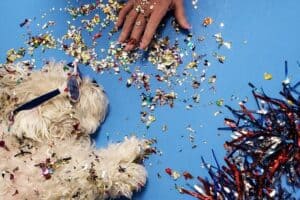
2. Desensitize your pet to Fireworks
Playing videos or recordings of Fireworks at home in short spurts can help your dog become more comfortable with the “real thing.” Using a YouTube Fireworks Video is a great place to start. Be sure not to overdo it, as these can also make your dog more sensitive to loud noises if over-exposed. If, after a couple of these sessions, your dog’s reaction has not eased, you may want to switch gears. Try playing music or watching TV recordings of outdoor festivities that mimic the sounds of celebrations and fireworks as practice for the real thing.
Changing the visual atmosphere of the room can also help your dogs receive fireworks more easily. Closing the curtains can help muffle the sound and hide the visual flashing component, which can also cause alarm. A dark place with sounds coming from a distance can help our dogs handle fireworks better.
3. Exercise!
Never underestimate the power of EXERCISE! Taking your dog for a nice long walk in the morning will help ease their anxiety in the evening. As the saying goes, “A tired pup is a happy pup.” Having been properly exercised, they are more likely to sleep or feel relaxed during stressful times later in the day. Be sure to take proper care when exercising your dog during the summer months. We recommend walking your dog during morning hours when the temperatures are cooler, and the ground is not hot or harmful to their paws. After their morning exercise, they will have no energy left to be fearful or anxious about fireworks or storms occurring in the evenings.

4. Be home with your Dog during Firework times
This option is not for everyone, but if possible, stay home with your pet during prime fireworks hours. Your presence will provide the best possible comfort to your four-legged baby. Being home allows you to problem solve, distract, and pivot as needed. When you are home, you can adjust the TV volume and put on or take off their Thundershirt, as needed. The Thundershirt is another great tool to keep dogs calm during stressful times by creating comfort and calm.
Giving delicious treats or playing with their favorite toys will keep their mind off their anxiety and distract them as well.
The way you act also affects your dogs. A calm non-distraught owner will convey calmness to their pets in any situation. Overall, your dogs will be happier and more confident knowing you are with them.
If you cannot be home, you may want to purchase a Dogness Smart Camera with a treat dispenser. This will allow you to keep a close eye on your pet and provide a delicious distraction for them until they are safe in your arms again.
5. Talk with your Vet
If you implement the above tips and your pet is still riddled with anxiety, reach out to your veterinarian. There are many calming agent options a vet can recommend for your pet. This includes anything from all-natural CBD oils to calming chews as well as over-the-counter and prescription medications. The pet may also recommend specific trainers or training techniques to help your dog feel comfortable around loud noises and fireworks. Your Vet will be able to guide you in the best direction given your dog’s history and current state.
As pet parents, we intend to keep our fur babies safe. Fireworks, and our pets’ reactions to them, can be unpredictable. These 5 ways to keep your dog calm during fireworks are just some suggestions to help your dogs during the firework season. Pets still escape from homes despite our best efforts, so please make sure your pet comes home safely by keeping their ID tags updated. Microchipping your pets will also help quickly identify them in case they run away. Be sure to include your pets’ name, a working phone number, and your current street address in the identification.
Share this FREE infographic to spread the word and keep pets safe this 4th of July!
Just Around the Corner offers daily Dog Walking and Pet Sitting in Plymouth, MA. To learn more about how Just Around the Corner can help, check out our Services Page. You can also Contact Us for more information.

by Pam Ranheim | Apr 7, 2021 | birds, cats, COVID-19, dog walking, dogs, pet care, pet health, pet sitting, pets, Plymouth MA, special needs pets
Given the amount of time we have been spending with our fur babies during the “Stay At Home” order, we can expect our pets to experience some form of separation anxiety. Easing your pet into their pre-pandemic routines may be a challenge as we return to work and the outside world. We have come up with five ways on how to ease your pet’s separation anxiety. These steps will allow for a smoother transition into a routine for the changes to come.
What is separation anxiety?
Separation anxiety occurs most commonly when an animal is hyper-attached to their human. They feel abandoned when they are separated from someone they spent so much time with. This can manifest in different ways for different pets. Some pets become more vocal or destructive, and others become quieter. Some signs of separation anxiety include:
- Vocalization: howling/whining/barking or excessive barking
- Destructive chewing furniture/ personal belongings (destructive behavior)
- Inappropriate urination (peeing outside the litter box or on the owner’s clothes)
- Scratching at the door/destructive behaviors
- Shaking/Shivering
- Refusing to eat
- Become quiet or withdrawn
Generally, these behaviors start once you begin your routine to leave home, or after you have left. Picking up your keys or putting on your coat will be a sign your pet will associate with departure. These sound like some daunting characteristics, but rest assured, separation anxiety can be aided and even eliminated from the pet given the proper care and training in most cases.
Here are five ways on how to ease your pet’s separation anxiety.
Practice your ‘exit routine’ without the exit
How many times have you gone to put your shoes on to leave the house, and one of them has magically disappeared? That is because our pets KNOW what it means when we put our shoes on. Try doing the final few steps of your exit routine without actually exiting. Put on your shoes, grab your keys, wallet/handbag, and then stay home. Instead of leaving, give your pet extra loving, maybe a treat, belly rubs and reassurance. When you do this, your pet will start to disassociate those “exit actions” with you leaving the house. Do this several times a day as you lead up to the actual exit date. If you have already begun working outside of the home, you can still practice this technique during periods of being home, such as evenings, weekends, etc.
Good Old Entertainment
We would be a little anxious listening to ourselves breathe all day while missing our favorite person. Our pets can also get anxious and distressed from the silence. Give your fur baby some light entertainment while you are away. Whether it’s the radio, music, the TV, or even an audiobook, leaving something on with a human voice will make them feel like someone is there with them. This is a simple way to comfort your pet and give you some peace of mind knowing there is something to keep them company while you are away.

Help your pet to stay calm even when they miss you
Stay Calm
Humans emit pheromones that our pets can smell. These hormone-like chemicals tell our pets when we feel nervous, fearful, or anxious. Our anticipation of knowing our pets will be anxious when we leave can cause us to emit those chemicals, adding to their separation anxiety and emotional distress. If you can’t help but feel worried about leaving them, pop a mint or piece of gum into your mouth to throw them off your scent.
Pawsitive Association
Pawsitive association works for our sweet kitties and slobbery pups by rewarding their good behaviour through toys or treats. For this behavior modification exercise, try purchasing a new toy that you only bring out when you leave. This will give them something positive to enjoy while knowing you are leaving. If the way to your pet’s heart is through their stomach, then have a special snack on hand. Tuna juice for cats or frozen peanut butter Kongs for pups are great treats. This will keep them busy as you head out the door and leave them with the fondest of memories of you as they snack away!
Exercise and Interaction with Other Humans
Exercise and interaction are a fantastic way to build up your pet’s confidence and ultimately relieve much of their anxiety. Spending a designated time walking your dog or playing with your cat before you leave will also tire them out. Try to plan your day out thoughtfully and include them into your daily routine. This will not only help them get into a daily schedule, but the exercise and play will also be good for their physical and psychological well-being. Remember, a tired pet is a calm pet, which guarantees peace of mind.
If you have been home around the clock over these last several months, chances are both you, and your pet will feel a void when the time comes to part ways. Hiring a midday dog walker or cat sitter is a great way to make sure the transition is smooth for both of you. A dog walker will make sure your pup gets fresh air and great exercise to prepare them for the second half of their day while waiting for mom/dad to arrive home. A cat sitter can come by during the day for some playtime and a treat or two. Having “outsiders” come into the home will help your pet become more adaptable. This ultimately places less hyper-attachment on you, giving you a happier, healthier, less anxious relationship.
If you are concerned with cross-contamination when considering hiring a dog walker, cat sitter, or pet sitter, check out our Covid safety measures to learn all about the safety guidelines Just Around the Corner Pet Sitting and Dog Walking is implementing. We believe in keeping our clients, their fur babies and our employees safe during these unique times. Together we can ease our pet’s separation anxiety while creating a safe and healthy environment for everyone.
Have experience with an anxious pet as a pet owner? Let us know how you helped them overcome and ease Separation Anxiety in the comments below.

by Pam Ranheim | Mar 26, 2021 | cats, dogs, pet care, pet health, Plymouth MA
Having a clean home protects us from harmful bacteria and viruses and creates a healthy and comfortable atmosphere. For homes with pets, cleaning your home in a pet-friendly way is essential. Household cleaners are a common cause of poisoning for cats and dogs, so you must know which cleaning products are safe and pet friendly.
Effects of Toxins
Toxins are bad for our health and are harmful to the planet. Many people think you have to ingest the chemical for it to be dangerous. However, toxins are just as damaging to breathe in as to be around. These toxins pose a threat to us and our pets. The contact made with these chemically cleaned surfaces can negatively affect our pets’ health.
Inhaling or ingesting chemicals can have dangerous effects on our pets, especially with their heightened senses of smell. Being around toxic chemicals can cause dizziness, headaches or nausea. Ingesting poisonous chemicals can have life-threatening effects. If you think your pet has ingested a chemical, take them to the vet right away.
Going Green and Pet-Friendly
There’s no time like the present to change your ways. You can make your natural products at home. These DIY products will be safe for your family, including your pets, and you’ll know everything that’s in them. It’s also quick, easy and cost-effective!
Making homemade pet-friendly cleaning products does save you money in the long run. However, pet-friendly and green products are popular in the market and can be purchased commercially. Make sure you do your research before buying any cleaning product.

Getting Started
Many people don’t want to throw out the commercial products that they have on hand – and rightly so. We recommend starting simple and gradually swapping your commercial cleaners for pet-safe and homemade organic products as you finish those toxic bottles. We promise it’s a lot easier than it seems!
When you’re ready to replace your old chemicals, we recommend you start collecting the following products:
- Spray bottle
- Distilled water or boiled (then cooled) tap water
- Box of baking soda
- Table salt
- Bottle of white distilled vinegar
- Oils (almond, olive, vitamin E, mineral, coconut)
- Castile Soap (bar or liquid form)
- Fresh lemons.
- Washcloths or old rags
- Pure, essential oils (which are great for their antiseptic, antibacterial qualities) smell so good: Rosemary, tea tree, lavender, rosemary, peppermint, and lemongrass are just a few).
A simple search online can result in many free recipes. From carpet cleaning, carpet stains, floor cleaning and eliminating pet odors, there is a recipe for all household cleaners. With these natural ingredients, you can create many organic pet-safe cleaning products for all your household chores.
Helpful Resources
If you prefer to have a personal copy of pet-safe organic cleaning products, we recommend the book “The Organically Clean Home: 150 Organic Cleaning Products” by Becky Rapinchuk. It comes with simple instructions on how you can get started. It also contains many practical hints along the way. This book has received great reviews, and it’s FREE if you subscribe to kindle unlimited!
Here’s a sample of an easy pet-safe recipe from “The Organically Clean Home: 150 Organic Cleaning Products”:
Liquid Dishwasher Detergent
What you need:
1 cup of castile soap
¼ cup distilled water (or tap water that is boiled and cooled)
1 teaspoon of lemon juice
5 drops of essential oil (lemon)
Combine the ingredients, and voila! Use one tablespoon of the mixture per load and run your dishwasher as you normally would. Becky suggests putting distilled white vinegar in your dishwasher’s rinse compartment if you’re worried about hard water spots. This detergent also lasts and has a 3-week shelf life!
Contact Us
We believe that cleaning your home in a pet-friendly way can not only improve your pet’s life but your life as well. These organic mixtures and cleaning remedies will give you one less thing to worry about your pet’s health and safety. If you would like to know about the pet-safe cleaning products we use for pet sitting and disinfecting, please contact us.
Just Around the Corner offers daily Dog Walking , Dog Hiking, and Pet Sitting in Plymouth, MA. To learn more about how Just Around the Corner can help, check out our Services Page. You can also Contact Us for more information. Be sure to Like us on Facebook and Follow us on Instagram!
We’d love to hear what your “go-to” natural cleaning products are? Happy cleaning!
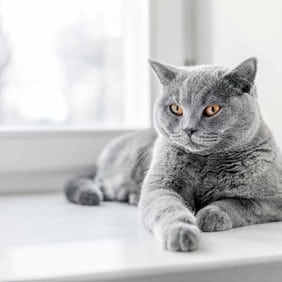
by Pam Ranheim | Feb 18, 2021 | cats, pet care, pet health, pet lovers, pets, Plymouth MA
Whether you have a cat, are about to bring home your first, or are pet sitting a kitty in your home for a short time cat proofing your home is a must. Anytime we prepare to bring cat into our home no matter how long or short their stay, we must first make their environment safe and secure. Not only is this crucial for keeping the cat safe throughout their time in your home but it provides much peace of mind for you too. Let’s break down every room of your house to share the best ways to cat proof your home.
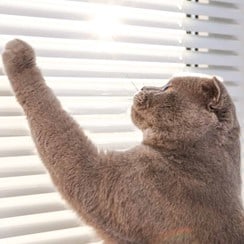
A cat playing with a cord of a set of blinds
Living Room
Tie up blind cords. Oh, the fascination of a long, lanky blind cord! While these common ribbons of material are the best thing since catnip to our kitties, they pose certain dangers that you want to avoid. Playtime with a blind cord can quickly turn into a tangled mess escalating fear and frustration in our kitties. A caught paw could become a broken bone and even, God forbid, a choking hazard almost immediately. Avoid disaster and tie up those intriguing blind cords.
Hide electrical cords. Who doesn’t love a long cord to play with, chew on, and even befriend? Well maybe not you, but your cat sure does. Wherever possible secure all electrical cords either tightly against a wall or hidden in a space your cat cannot reach. Avoiding electrocution is key to being a successful cat parent, hide the electrical cords.
Cover outlets. If you are a cat owner already you know that felines have an innate sense of what they are not supposed to do and go right for it, right? These curious little areas on the wall are no exception. Electrocution aside, their claws can easily get stuck in the tiny holes of an outlet and cause major pain.
Candle with care. Flames are intriguing to our curious kitties. Be sure to always place your candle up high or in an area that your cat cannot or will not get to. Even when a candle is not lit avoid letting the candle become a play toy. Once a cat feels like something is theirs to play with, whether it is lit or not, they will not make a distinction between times they can and cannot play with it. Candle with care my friends.
Check if a plant is poisonous before bringing it into your home. Always, always, always check here to see if a plant is poisonous to your pets before bringing it into your home. There is a surprising amount of quite common plants that are poisonous to our beloved fur babies. Do not assume, always check the poisonous plants to pets list first!
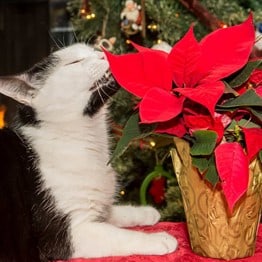
A cat smelling a poisonous poinsettia
Kitchen
Stovetop safety. This is more about a “redirection” routine for when your cat decides to dance on the stove top. Establish a ground rule that being on the stovetop, no matter when, is never allowed to keep your curious felines save. Whether you use a spray bottle or blow a whistle to signal the current action is not acceptable, decide what works for you and choose something your cat can understand.
Keep drawers and cabinets closed. The kitchen houses many potentially dangerous items so it is best to avoid “playtime” all together in this area. In addition, be mindful of closing cabinets and drawers immediately after use. We all know how sly and quick our kitty cats can be and the next thing you know they are playing with the Ninja blade at the back of your corner cabinet! Keep cabinets and drawers closed and keep your kitty safe.
Countertop awareness. Remember that there is a cat constantly roaming around every room of your home looking for interesting things to play with. Do not leave hot pots/pans or other potential dangerous yet intriguing kitchen tools unattended. When not in the kitchen clear your countertops of any knives, blenders, mandolins, etc. Your cat may never show an interest in being on the kitchen counter, but don’t underestimate the power of a bored cat. You can never be 100% sure a cat won’t do something, am I right?
Keep trash securely covered. Keeping the trash covered always is extremely important. After all, what we put into these shiny barrels is TRASH. Whether it’s rotten food, raw chicken packaging, or plastic bottle ties (which we sincerely hope you cut up before placing in your bin) nothing good comes from a cat getting into a trash can. Avoid a choking catastrophe or an emergency vet visit be putting a lid on it.
Bedroom/ Office Space
Keep nightstands and desks clear of potentially dangerous items. We all have our evening routines whether putting on creams, taking nightly meds, or even sewing up a hole in your spouse’s work shirt. Kitty thinks wahoo! It doesn’t get much more intriguing than string with a shiny needle attached or the chattering sound of pills when they bat at the container with their paw. Whatever your routine looks like be sure to have a proper place to securely put those items away when they are not actively being used.
Hide mothballs. Do not leave mothballs out in the open. Always hide them in a drawer or up on a shelf in your closet. Place them anywhere that your cat cannot get to as they are toxic to our precious kitties.
Research your essential oils. Not all essential oils are safe for pets. If you love running your diffuser even just occasionally be sure to research the types of oils you are using first. Click here for a list of oils that are toxic to pets.
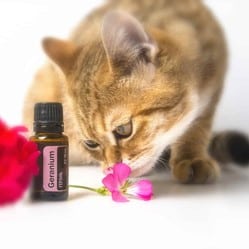
Cat smelling a flower and essential oils
Bathroom
Cover the trash. Just like the kitchen these curious bins that house all the things their humans don’t want/need anymore is just too much not to play with. Dental floss in particular must be avoided as it can easily be ingested and cause major intestinal issues. Keep all trash bins throughout your home covered for optimum pet safety.
Always put the toilet seat lid down. This is particularly important for new kitties. They can easily slip and fall into the toilet bowl when trying to climb the toilet. Avoid disaster by simply keeping the toilet seat cover closed.
Laundry Room
Safety container for detergent. Laundry detergent not only smells wonderful, but it looks exciting too! This is particularly true of those convenient detergent pods that are so popular these days. After all, to a cat those colorful pods are the perfect size for them to play with and who can avoid sinking their teeth into the rubbery, ooey gooey-ness?! Avoid temptation and keep all detergents and fabric softeners in a secured cabinet or container.
Keep washer and dryer doors closed. You have heard the horror stories, don’t let it happen to you! Always close the doors to your washer and dryer to keep your kitty out. If you need to air out the washer be sure to check that your cat is not anywhere in the room before shutting the door to the laundry room itself. Only then should you leave the door to one of these machines open.
Double check before starting a new laundry cycle. Even when we exercise proper precaution and keep the doors to our washer and dryer closed our kitties can act in the blink of an eye. Always doublecheck the drum of your machines for your curious kitty before shutting the door and starting a new wash/dry cycle.
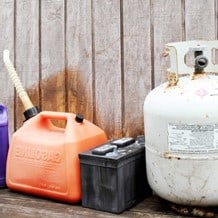
Hazardous household materials
Storage Spaces
Store Chemicals and hazardous materials safely. From car oil to rock salt always keep chemicals and other hazardous materials in proper bins, containers, or out of reach locations. Even if you keep all these items in your garage where your cat “never goes” we all have had those moments with Felix senses a mouse or gets the itch to run out the door into the garage for no apparent reason. It is better to be safe than sorry. Keep hazardous materials safe and secure to avoid disaster.
There you have it! With every room in the house safely secure for your fur baby to live, play, and love as they please you can enjoy peace of mind and harmony. Just remember, never underestimate the power of curiosity in your cat. Have experience cat proofing your home? Share your tips in the comments below!
Just Around the Corner offers daily Dog Walking , Dog Hiking, and Pet Sitting in Plymouth, MA. To learn more about how Just Around the Corner can help, check out our Services Page. You can also Contact Us for more information. Be sure to Like us on Facebook and Follow us on Instagram!

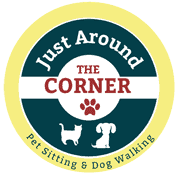














Recent Comments